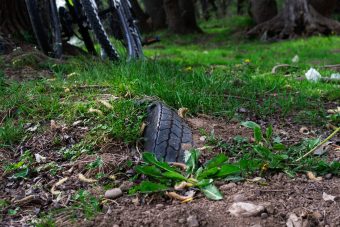In a dozen tyre treatment plants in our country, tyres are collected through a collection network organised by recyclers. This network includes its collecti-on system, as well as individuals and legal entity collectors with whom it cooperates. Tyres also get to recycling centres from the waste producers such as tyre repair shops, agricultural goods, landfills, industry, rubber, mining and transportation companies, pneumatic manufacturers and distributors.

In Serbia, the “polluter pays” principle applies, which is derived from the EU legislation. It means that tyre importers and manufacturers are required to pay the environmental tax and this money to be used for safely disposing of tyres when they become waste.
The collection of the environmental tax has been increasing year by year. However, according to information from the Recyclers Association of Serbia, the payment of incen-tive funds for tyre disposal and all special waste streams has been overdue for more than a year. The incentive has been paid in a lower amount than the waste companies processed. Last year, the state paid 34 per cent fewer incentives for the treatment of waste that has already been collected and processed by recyclers. A total of 42,000 tonnes of tyres were treated last year. It follows that treatment of 14 million kilograms of tyres remains unpaid, the Association remarks. By the time the third quarter ends, recyclers will have not yet received a dime of incentive funds.
The process of recycling waste tyres is not a highly profitable business, because the incentive funds cover only a fraction of costs of the collection network, waste transportation and the challenging and expensive treatment technology of this type of waste. Only a high-volume production and a placement of products derived from the recycling process can generate some profit.
In focus:
Adverse effects of waste tyres on the environment
The Association points out that waste tyres belong to special waste streams, along with batteries, accumulators, waste oils, waste from electronic and electrical products. They require special waste management from the place of generation, collection, transportation and treatment. Otherwise, they can have negative consequences on the environment and human health if inadequately disposed of.
When properly discarded, waste tyres do not cause soil, water and air pollution. However, there are some situations with a potentially adverse impact on the environment, which is mainly related to tyre’s high flammability and the risk of fire in landfills.
By improper tyre burning, the smoke that contains many harmful substances is released into the atmosphere. Toxic gases dioxins and furans, which negatively affect human health and the environment are emitted and often have a high carcinogenic effect. Also, the melting of tyres produc-es liquid contaminants that penetrate the soil and can be hazardous if they reach the surface and groundwaters.
Due to their shape and specific density, pneumatics cannot be disposed of in a way where the available space is efficiently used, which, as a consequence, requires the provision of large landfills. During the warm rainy season, the interior of a tyre in a landfill is partially filled with water and becomes a breeding ground for mosquitoes, rodents.
New products from recycled rubber granules
The tyre recycling process produces rubber granulate (65 per cent), steel wire (35 per cent) and fabric (5 per cent). The separation of the components is done by the action of a magnet and air current. The only energy source used is electricity. No chemical reagents or thermal reactions are used, so no waste substance is generated. It is especially important that there is no environmental pollution in this process as a side effect.
The rubber granules obtained by cutting the tyres are manufactured in different sizes depending on dimensions that companies require for further production. The small-est dimension to which a tire is recycled is half a millimetre. The steel wire is used in foundries and thus returned to the production process, and cement plants most commonly use the fabric as fuel.
Recycling of tyres conserves resources because of variety of products that can be made of rubber granulate, such as substrates for sports fields, children’s playgrounds, linings for roof insulation, floor insulation material, sound barriers in construction, waterproof membranes, porous bituminous binder, rubber tubes, trash cans, aggregate for asphalt mixers for road construction, auto parts (brakes, interior components, steering wheels, bulkheads), barn linings and others.

